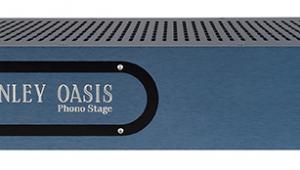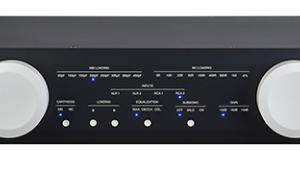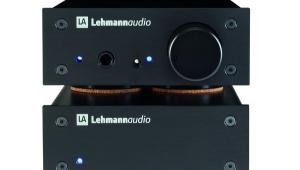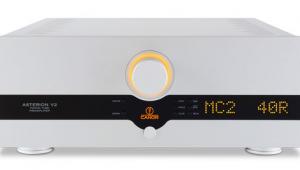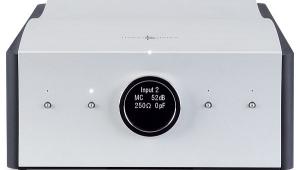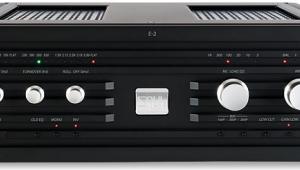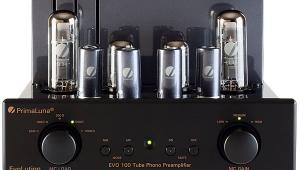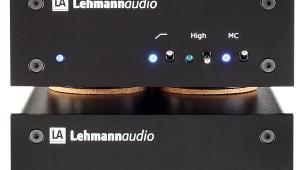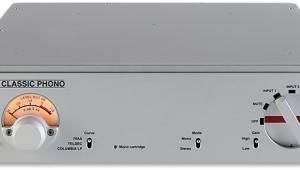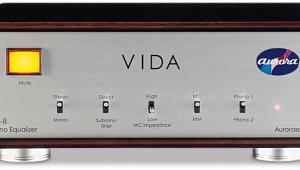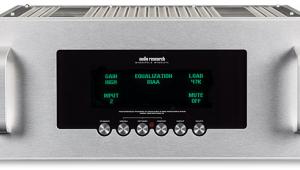Parasound Halo JC3 Junior phono stage Page 2
Steve Hackett’s ‘Shadow Of The Hierophant’ [from Voyage Of The Acolyte; Charisma CAS 1111] is a slice of quintessential mid ’70s progressive rock, very well recorded with a wide dynamic range and a ‘dry’ tone typical of that period. The Junior carried it with real elan, giving a great insight into the grain of the vocalist and instruments, and an extremely tactile classical guitar sound. Fed from a Lyra Dorian moving-coil in a Michell GyroDec/Tecno Arm, the glory of vinyl was really on display here.
The Junior’s innate transparency and low noise was much appreciated, giving a most vibrant and natural feel to the proceedings with deep bass and sparkling treble. Again it does the trick that its bigger brother performs so well, allowing one to listen right into the soundstage and hear all the different strands of the mix playing together. Even in the most crowded dynamic arenas, this phono stage kept things clean, open and ordered.
Tracking the new Audio-Technica VM530EN cartridge, the moving-magnet input returned similarly impressive results, providing no less entertaining a sound.
Enveloping Soundstage
Back to the MC, and it was time to put the Junior through its paces on more modern material. One of the other stand-out features of this phono stage is its ‘architectural’ soundstaging. Its more expensive siblings are stronger still in this respect but the Junior’s ability to recreate a vast, cathedral-like recorded acoustic is quite special at the price.
It’s not simply the sort of broad, nebulous Phil Spector-like wash of sound that you get from some tube designs. The latter may be very pleasing to those vinyl addicts who love euphony, yet the Junior steadfastly refuses to behave as a sort of vinyl effects processor. Rather, it diligently recreates the borders of the concert hall or recording studio as best it can.

At the price, the result is impressive – 4hero’s ‘Spirits In Transit’ [from 4 Pages; Talkin’ Loud 568 879-1] proved vast and enveloping, with those soaring strings, harp and deep double-bass apparently nailed to the boundary wall of my listening room. You could practically hear the drum kit resonating off its booth in the studio. Everything was affixed to virtual ‘hard points’ in space with great precision, staying in place even during the rousing crescendo.
Although phono stages can’t make music sound artificially rhythmic, they often have a negative impact by slowing things down. Some seem to make things appear breathless, others manage to suck the life out of a recording, rendering it dull and devoid of passion. Like its bigger JC3+ brother, the Junior did neither of these. Instead it presented a fast and dynamic face to the world, able to track the subtle accenting in the music while also following its natural rhythm. Annie Lennox’s ‘Don’t Let It Bring You Down’ [from Medusa; RCA 74321-257171] is a sublime cover of the ’70s Neil Young masterpiece but, thanks to its rather dense and compressed ’90s production, can sound rather dirge-like.
Lilting Progression
Not so here, as the Junior dug deep, lasering through those thick layers of production. It proved well able to capture the leading edges of the electronic snare and cymbal sounds and fire them out at great pace; its innate sense of control and grip kept things composed, and it had room to breathe during climaxes, remaining calm and collected.
The Junior doesn’t ‘throw’ rhythm at you – it’s not in the business of sounding unnaturally fast – rather it has a strong, controlled, lilting sense of musical progression where everything is kept exactly in its correct place. Yes, there are some tube rivals that present as dreamier and more romantic, but none cut through to what’s in the groove better than this. Put all these aspects together – its insight, control, accurate soundstaging and fine handling of rhythms – and you have a redoubtable performer.
Of course many phono stages excel in one or more of these areas but the JC3 Junior does very well with all across the board. Whether it’s the pristine classic electropop of Kraftwerk’s ‘Techno Pop’ [from Electric Café; EMI Electrola 1C 264 24 054 4] or the dramatic finale of Beethoven’s Symphony No 5 [Philharmonia Orchestra/Karajan; Toshiba/Angel Records AA-8212], you get a well-rounded, cohesive and informative sound.
It invites you in and lets you look around inside, so to speak, while remaining largely impartial about your tastes. Sure enough, spending some £2000 more on Parasound’s JC3+ gets you greater image focus, insight and grip, allied to a slightly stronger bass and sense of spaciousness – but there’s no doubting that the JC3 Junior’s even-handed nature has huge appeal, as indeed does its much more affordable price.
Hi-Fi News Verdict
Parasound’s Halo JC3 Junior phono stage treads an intelligent line between two sonic extremes. Neither overly euphonic nor too forensic, it remains enjoyably engaging at all times, yet largely agnostic about the music you choose to use. It provides three key gain settings, with sensible cartridge matching options and a mono button to boot. Factor in fine build and finish and it clearly scores at the price.

